
Copernical Team
Chinese astronauts may build a base inside a lunar lava tube
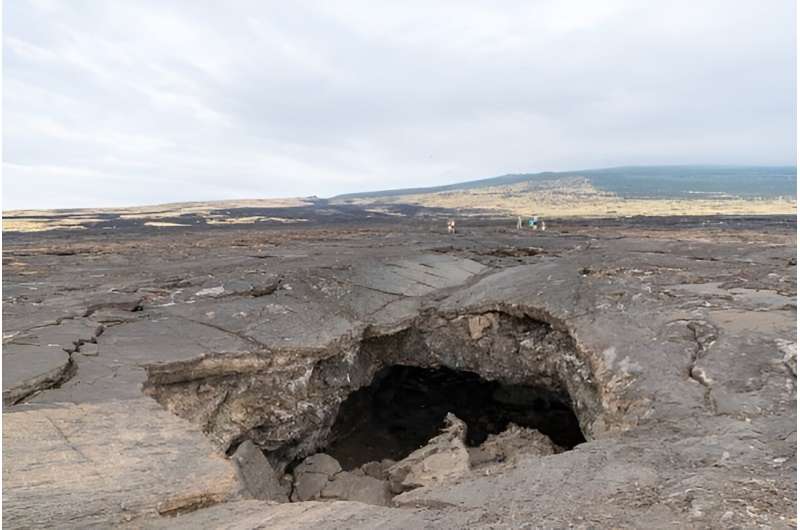
Caves were some of humanity's first shelters. Who knows what our distant ancestors were thinking as they sought refuge there, huddling and cooking meat over a fire, maybe drawing animals on the walls. Caves protected our ancient ancestors from the elements, and from predators and rivals, back when sticks, stones, furs and fire were our only technologies.
So there's a poetic parallel between early humans and us. We're visiting the moon again, and lunar caves could shelter us the way caves sheltered our ancestors on Earth.
On the moon, astronauts will need protection from a different set of hazards. They'll have to contend with cosmic and solar radiation, meteorites, wild temperature swings, and even impact ejecta.
Three astronauts return to Earth after a year in space. NASA's Frank Rubio sets US space record
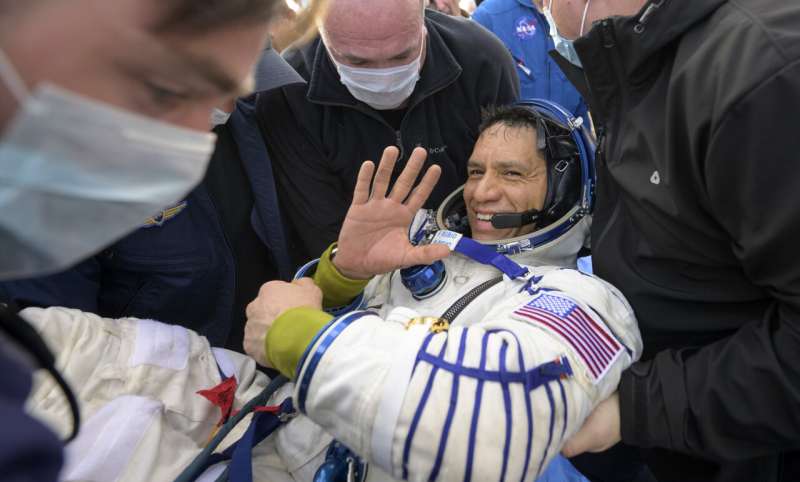
Ready for collection – lightsabres for Mars
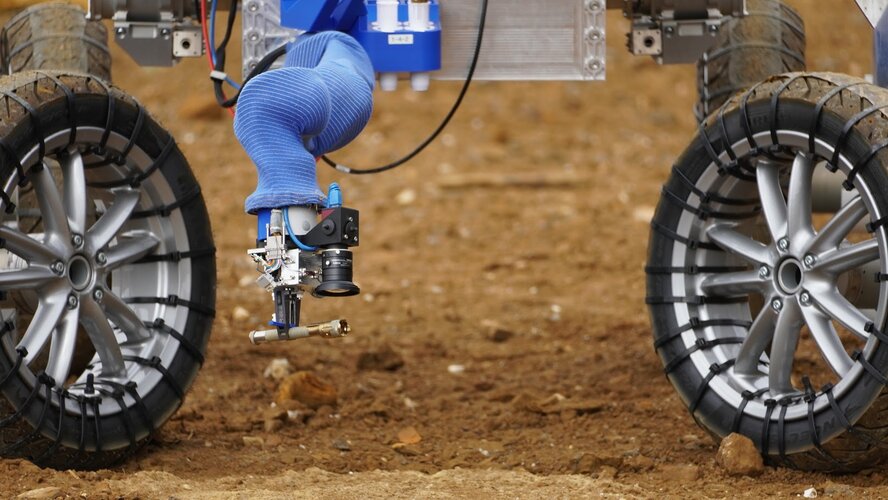 Image:
Ready for collection – lightsabres for Mars
Image:
Ready for collection – lightsabres for Mars Hera solar wing deployed
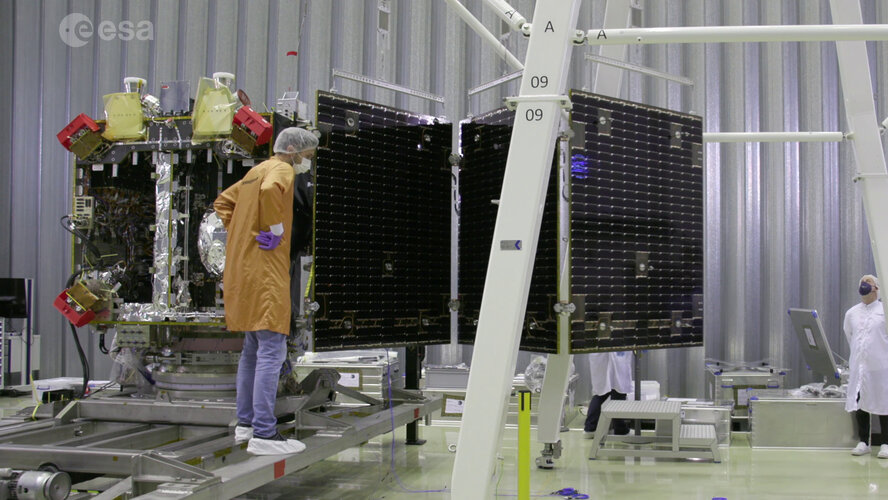 Video:
00:00:57
Video:
00:00:57
ESA’s Hera asteroid mission for planetary defence seen with one of its two solar wings added, during its continuing test campaign at the ESTEC Test Centre in the Nethelands.
The van-sized spacecraft, left, is powered by a pair of solar array wings, made up of three panels each, provided by Beyond Gravity in Switzerland.
One of these 5-m-long wings was added for Hera’s ‘cold deployment check’ – a manual unfolding process to confirm that the wing fits correctly. Because the solar wings have been designed to operate in weightlessness they were supported by a frame during this test
Hera takes wing
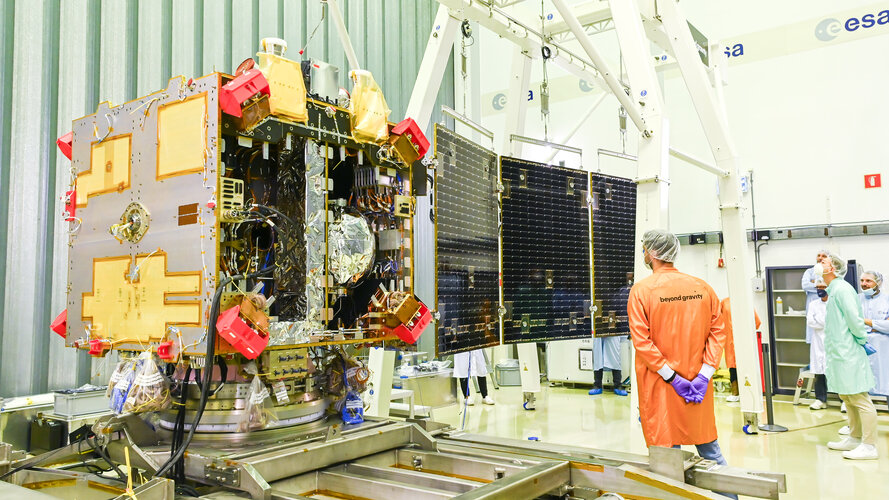 Image:
Hera takes wing
Image:
Hera takes wing Vega's fuel-free CubeSats to keep formation with wings

Spain’s trio of ANSER CubeSats, due to fly on Europe’s next Vega launcher, will fly like a flock of birds in orbit – in more ways than one. Keeping in formation by following their leader, the three shoebox-sized satellite will image Iberian waters as if they are a single standard-sized mission. And they will unfurl wing-like flaps to maintain their relative positions, surfing on the scanty airflow at the top of Earth’s atmosphere.
Arlington Capital Partners to acquire Exostar from Thoma Bravo
 Arlington Capital Partners ("Arlington"), a Washington, DC-based private equity firm, has agreed to acquire Exostar, LLC ("Exostar"), a leader in trusted, secure business collaboration in highly regulated industries including aerospace and defense, healthcare and life sciences, from Thoma Bravo, a leading software investment firm. Terms of the transaction were not disclosed.
The Exostar Pl
Arlington Capital Partners ("Arlington"), a Washington, DC-based private equity firm, has agreed to acquire Exostar, LLC ("Exostar"), a leader in trusted, secure business collaboration in highly regulated industries including aerospace and defense, healthcare and life sciences, from Thoma Bravo, a leading software investment firm. Terms of the transaction were not disclosed.
The Exostar Pl Omnispace and Lacuna showcase NGSO IoT satellite connectivity
 Omnispace, the company redefining global mobile connectivity, together with communications leader Viasat (NASDAQ: VSAT) and Lacuna Space, have demonstrated a first-of-its-kind, global, open standards-based internet of things (IoT) service which could pave the way for a range of IoT and direct to device (D2D) satellite services.
Omnispace successfully demonstrated its non-geostationary (NGS
Omnispace, the company redefining global mobile connectivity, together with communications leader Viasat (NASDAQ: VSAT) and Lacuna Space, have demonstrated a first-of-its-kind, global, open standards-based internet of things (IoT) service which could pave the way for a range of IoT and direct to device (D2D) satellite services.
Omnispace successfully demonstrated its non-geostationary (NGS How to build better extraterrestrial robots
 Running on the beach versus a paved road can change an athlete's stride, speed and stability. Alter the force of gravity, and that runner may break their personal record or sink into the ground. Researchers have to consider such parameters when designing extraterrestrial rovers and landers - which can trawl where no person has stepped foot. To better inform this work, a multi-institutional team
Running on the beach versus a paved road can change an athlete's stride, speed and stability. Alter the force of gravity, and that runner may break their personal record or sink into the ground. Researchers have to consider such parameters when designing extraterrestrial rovers and landers - which can trawl where no person has stepped foot. To better inform this work, a multi-institutional team Trimble and Kyivstar to provide GNSS correction services in Ukraine
 Trimble (NASDAQ: TRMB) and Kyivstar, Ukraine's largest telecommunications company, are partnering to install a new Continuously Operating Reference Station (CORS) network to provide Global Navigation Satellite System (GNSS) correction services across the country.
Available to users as an annual subscription service, the new network will be built using Trimble's hardware and software positi
Trimble (NASDAQ: TRMB) and Kyivstar, Ukraine's largest telecommunications company, are partnering to install a new Continuously Operating Reference Station (CORS) network to provide Global Navigation Satellite System (GNSS) correction services across the country.
Available to users as an annual subscription service, the new network will be built using Trimble's hardware and software positi 
































